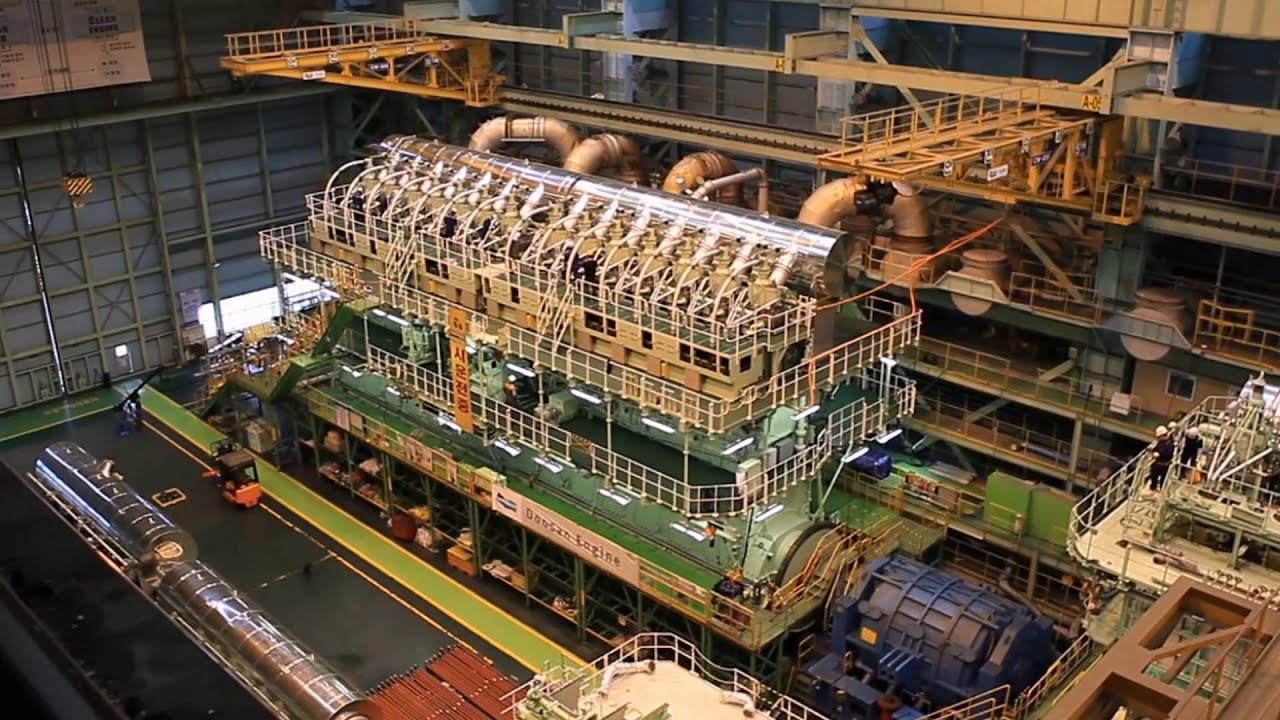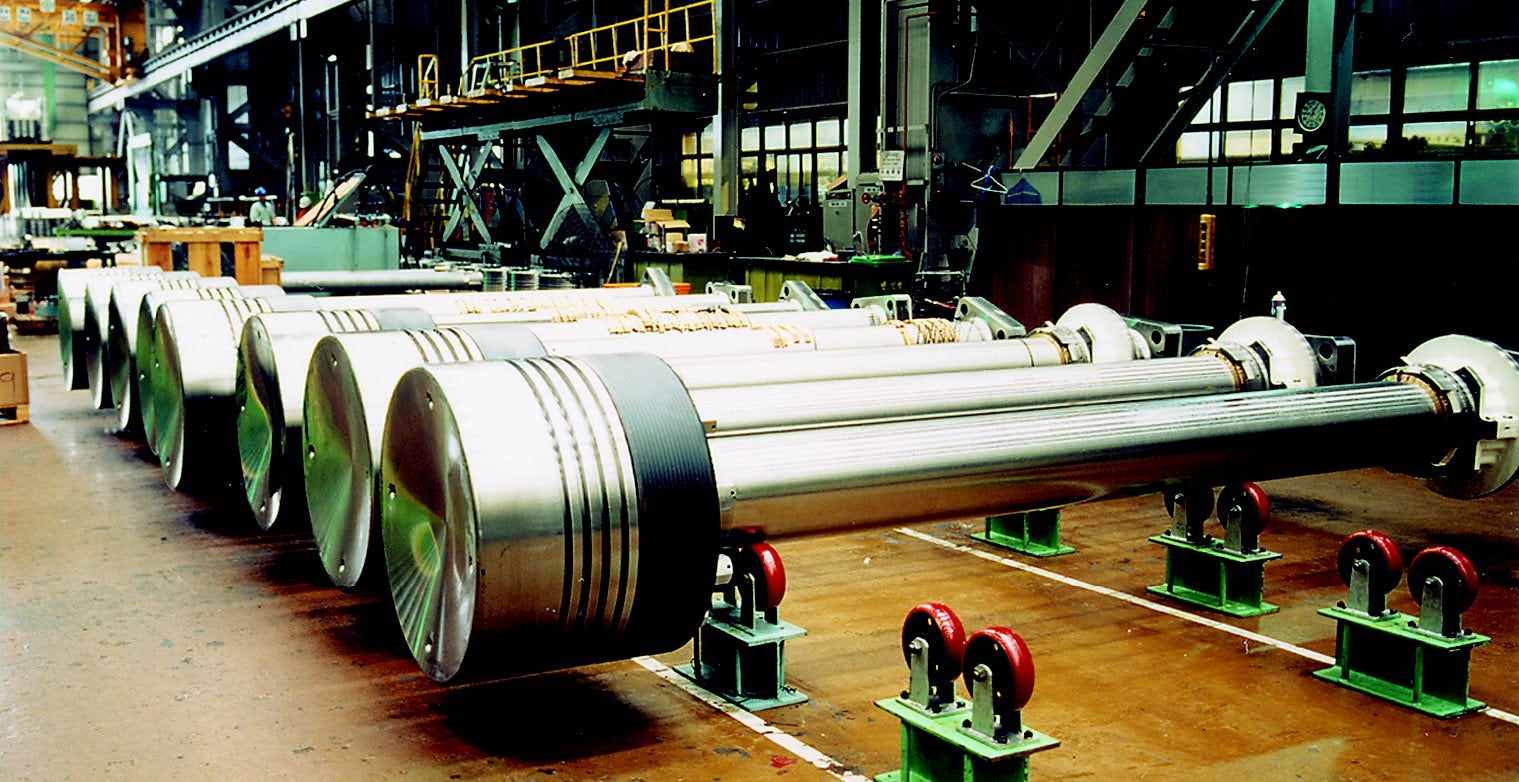How strong is mankind's greatest and most powerful engine?
According to information from Zmescience, Wärtsilä RT-flex96C is the largest and most powerful engine in the world today, it runs on diesel fuel and has up to 109,000 horsepower.
![]()
Why is Wall Street "indifferent" to the debt ceiling but feverish with a stock that is on the rise?
The landmark phone call to save the US from default at "89 minutes": Two Asian countries breathed a sigh of relief...
Working 3-4 hours/day to earn 94 million/month: No need to get up early, don't come to the company, still have...
Van Hau got a new car, happy hand in hand with his girlfriend Doan Hai My
Suddenly, a bank opened 23 new branches and transaction offices from the beginning of the year until now
The secret to longevity of a 122-year-old woman with nearly 200 grandchildren and great-grandchildren

Today, along with the development of science and technology, in order to meet the competitiveness in the field of sea transport, shipbuilding diesel engine manufacturers in the world always research and develop to offer new engine designs with optimized structural characteristics, fuel economy, maintenance cost reduction and especially environmental pollution reduction.
Deep inside the giant cargo ships and oil tankers around the world, there really is a "monster" lurking inside. It is a machine of size and power that is astounding: the Wärtsilä RT-flex96C, now considered the largest and most powerful engine in the world. However, the story of this engine is not only about size, but also about efficiency and innovation.

This giant machine was built by Wärtsilä, a Finnish mechanical company. With 14 cylinders in line. It has a total capacity of 109,000 horsepower (80,800kW) - enough power to 'feed' a small town. The total weight of the Wärtsilä RT-flex96C is more than 2,300 tons - equivalent to the displacement of a fully equipped corvette. With a length of 26.6m and a height of up to 13.5m, this engine block is even taller than a 4-storey house.
Wärtsilä is a Finnish company that designs and manufactures large engines for ships and power plants. In 2005, the company began to create the largest and most powerful diesel engine in the world. The result was the Wärtsilä RT-flex96C, a low-speed, two-stroke diesel engine that uses conventional rail fuel injection to increase performance and reduce emissions.
The RT-flex96C is a veritable giant among engines, with fourteen cylinders capable of producing over 100,000 hp with over 7,000,000 Nm of torque – enough to power an entire market. suburban town.

By using bracing technology instead of using traditional camshafts, chains, fuel pumps and hydraulic actuators to help the engine operate at maximum with low rpm, helping to save fuel and reduce emissions. toxic. In 2006, more than 300 RT-flex96C engines and old RTA96C engines were ordered to be manufactured and put into operation.
Each of the 14 integrated cylinders consumes 6.5 ounces of diesel in a cycle generating 5700 kW of power. That may sound like a lot, but this engine is actually highly efficient and one of the least polluting, using conventional rail fuel injection and other technologies to reduce emissions. and increase fuel economy.
In 2006, the Wärtsilä RT-flex96C engine was installed and eventually set sail aboard the Emma Mærsk, a cargo ship that could carry 11,000 20-foot containers at 31 knots, while most Most other ships of the same class can usually only operate at a speed of 20 knots.

The engine exhausts air through exhaust valves operated by an electronic system, hydraulically braced - which eliminates the camshaft. The maximum rpm is only 102 rpm, but the amount of torque generated is still enough to tear a tank.
Thanks to the high power output, large cargo ships equipped with the RT-flex96C can achieve high average speeds, reducing the time required to transport goods and increasing the number of trips per year.
The ship equipped with RT-flex96C regularly ships goods from China to the US, can deliver goods 4 days earlier than competitors, saving a lot of money.
How strong is mankind's greatest and most powerful engine? - Photo 4.
The camshaft of this engine block alone has a weight of up to 300 tons. While each piston also reaches a mass of 5.5 tons. With 1 cycle of movement, a single cylinder of Wärtsilä RT-flex96C will consume about 160g of diesel oil and the total amount of diesel required to operate the entire engine block is 250 tons/day.
Wärtsilä continues to improve the design of the RT-flex96C, for example, it has been upgraded with a selective catalytic reduction (SCR) system to reduce nitrogen oxide emissions by up to 95%. The engine's advanced control system also allows optimal matching of engine power to the ship's propulsion requirements, further reducing fuel consumption and emissions.

Wärtsilä RT-flex96C is installed on a cargo ship with dimensions that are also among the largest in the world - Emma Mærsk. This ship can carry up to 11,000 containers of goods and reach an impressive speed of 31 knots (equivalent to more than 55km / h) Emma Mærsk regularly transports goods on the waterway from China to the US.
The Wärtsilä RT-flex96C remains to this day the largest and most powerful diesel engine in the world, a true giant among machines. It is a symbol of human ingenuity and innovation, and it will continue to power the world's largest ships, make freight more efficient and reduce its impact on the environment. field of transportation.
Why is Wall Street "indifferent" to the debt ceiling but feverish with a stock that is on the rise?
- Choose the best configuration management tool for your business
- Essentials on Hitachi Content Platform (HCP) Data Protection and Security
- When used Software as a Security nightmare: The risks of collaboration in the cloud
- About this webinar | Features and instructions for using Webinar
- How to use Webinar in business | Webinar Story 2019
Operate and exploit advertising by iCOMM Vietnam Media and Technology Joint Stock Company.
Adress: 99 Nguyen Tat Thanh, To 2, Khu 6, Thi tran Tan Phu, Tan Phu, Dong Nai.
Email: phuongtran2191@gmail.com | Tel: (+84) 984654960
Editor in chief: Tran Nha Phuong
Company: Lucie Guillot (Nha Phuong Tran)




